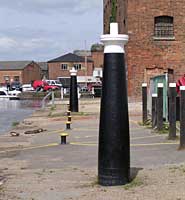
Two Crane Posts by Barge Arm
The
two cast-iron posts on the north side of the Barge Arm were pivots
for two manually operated cranes used to transfer cargoes to and
from boats. |
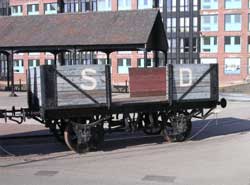
Railway Wagons
Two railway wagons
in the car park of the National Waterways Museum were rescued from
Sharpness docks - hence the initials SD. They were formerly used
to move goods from one part of Sharpness docks to another. |
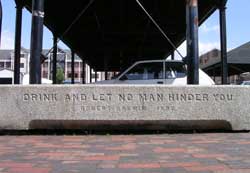
Horse Trough
The
horse trough near the National Waterways Museum was originally at
the Cross in the centre of Gloucester. When there was need to move
it from there, it was given to the Museum for the benefit of their
shire horse. |
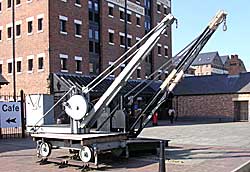
Two Museum Cranes
The
cranes outside the National Waterways Museum came from two waterways
maintenance units. They have been restored by volunteer members
of the Friends of the Museum. |
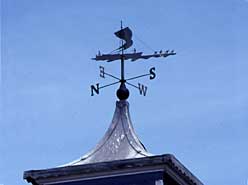
Weathervane on Museum Cafe
A
weathervane on the roof of the National Waterways Museum's cafe
shows bow-hauliers helping a square-rigged sailing barge to move
up-river against the current. |

Car Park Shelters
The
shelters in the car park off Llanthony Road are supported on cast-iron
columns that came from Romans & Co's saw mill that formerly
occupied part of the car park site. |

Llanthony Road Railings
The
railings along Llanthony Road came from the site of Gloucester's
old Royal Infirmary in Southgate Street around the time of the opening
of the National Waterways Museum in 1988. |
Llanthony Road
Gates
Gates removed from the
Llanthony Road entrance to the docks (and currently in storage)
had been moved from the Southgate Street entrance around the time
the National Waterways Museum was opened in 1988. They were originally
installed in 1923, replacing earlier (probably timber) gates. It
is expected that they will be re-used somewhere in the Southgate
Moorings redevelopment.
|






